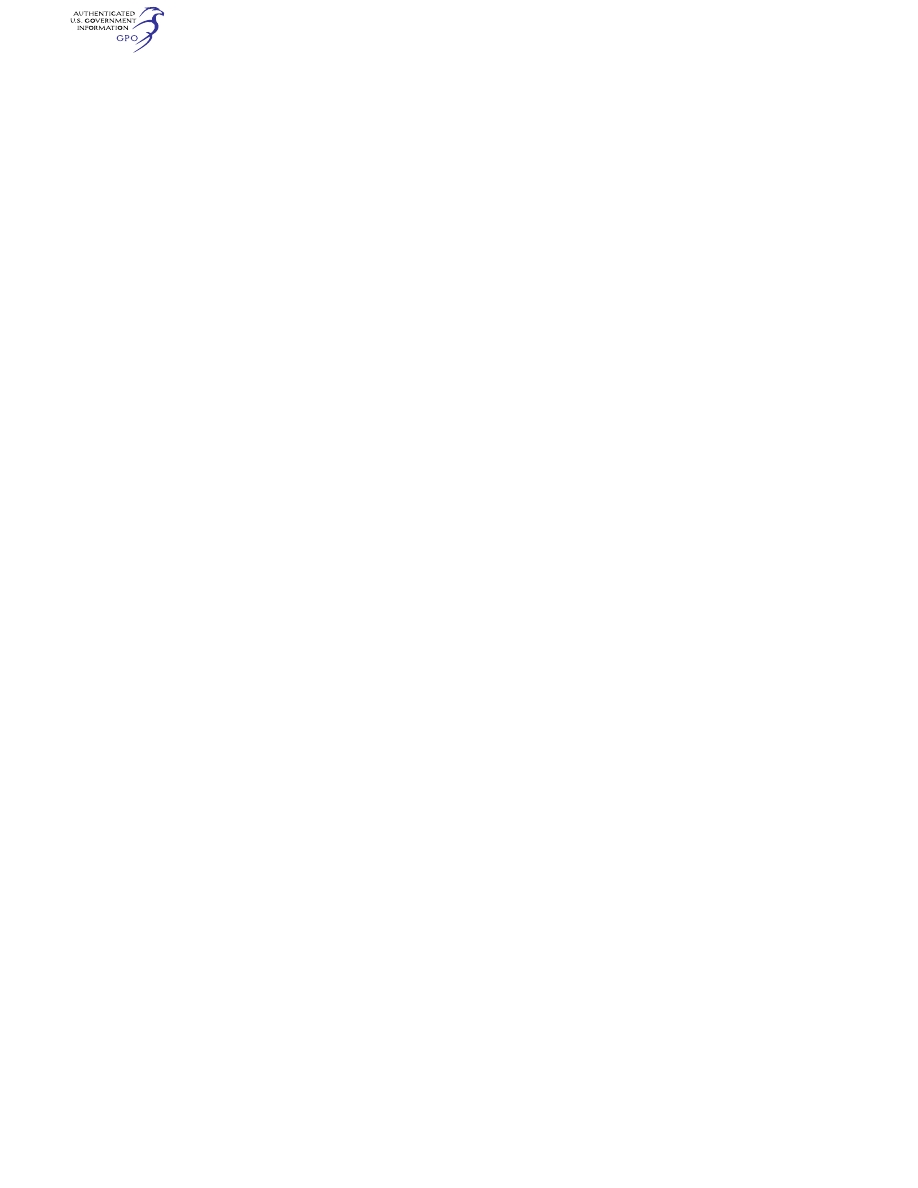
566
14 CFR Ch. I (1–1–24 Edition)
§ 27.1585
(3) Information necessary for mark-
ing the instruments required by
§§ 27.1549 through 27.1553.
(c)
Weight and loading distribution.
The weight and center of gravity limits
required by §§ 27.25 and 27.27, respec-
tively, must be furnished. If the vari-
ety of possible loading conditions war-
rants, instructions must be included to
allow ready observance of the limita-
tions.
(d)
Flight crew. When a flight crew of
more than one is required, the number
and functions of the minimum flight
crew determined under § 27.1523 must be
furnished.
(e)
Kinds of operation. Each kind of
operation for which the rotorcraft and
its equipment installations are ap-
proved must be listed.
(f) [Reserved]
(g)
Altitude. The altitude established
under § 27.1527 and an explanation of
the limiting factors must be furnished.
(Secs. 313(a), 601, 603, 604, and 605 of the Fed-
eral Aviation Act of 1958 (49 U.S.C. 1354(a),
1421, 1423, 1424, and 1425); and sec. 6(c) of the
Dept. of Transportation Act (49 U.S.C.
1655(c)))
[Doc. No. 5074, 29 FR 15695, Nov. 24, 1964, as
amended by Amdt. 27–2, 33 FR 965, Jan. 26,
1968; Amdt. 27–14, 43 FR 2325, Jan. 16, 1978;
Amdt. 27–16, 43 FR 50599, Oct. 30, 1978]
§ 27.1585
Operating procedures.
(a) Parts of the manual containing
operating procedures must have infor-
mation concerning any normal and
emergency procedures and other infor-
mation necessary for safe operation,
including takeoff and landing proce-
dures and associated airspeeds. The
manual must contain any pertinent in-
formation including—
(1) The kind of takeoff surface used
in the tests and each appropriate
climbout speed; and
(2) The kind of landing surface used
in the tests and appropriate approach
and glide airspeeds.
(b) For multiengine rotorcraft, infor-
mation identifying each operating con-
dition in which the fuel system inde-
pendence prescribed in § 27.953 is nec-
essary for safety must be furnished, to-
gether with instructions for placing
the fuel system in a configuration used
to show compliance with that section.
(c) For helicopters for which a V
NE
(power-off) is established under
§ 27.1505(c), information must be fur-
nished to explain the V
NE
(power-off)
and the procedures for reducing air-
speed to not more than the V
NE
(power-
off) following failure of all engines.
(d) For each rotorcraft showing com-
pliance with § 27.1353 (g)(2) or (g)(3), the
operating procedures for disconnecting
the battery from its charging source
must be furnished.
(e) If the unusable fuel supply in any
tank exceeds five percent of the tank
capacity, or one gallon, whichever is
greater, information must be furnished
which indicates that when the fuel
quantity indicator reads ‘‘zero’’ in
level flight, any fuel remaining in the
fuel tank cannot be used safely in
flight.
(f) Information on the total quantity
of usable fuel for each fuel tank must
be furnished.
(g) The airspeeds and rotor speeds for
minimum rate of descent and best glide
angle as prescribed in § 27.71 must be
provided.
(Secs. 313(a), 601, 603, 604, and 605 of the Fed-
eral Aviation Act of 1958 (49 U.S.C. 1354(a),
1421, 1423, 1424, and 1425); and sec. 6(c) of the
Dept. of Transportation Act (49 U.S.C.
1655(c)))
[Amdt. 27–1, 32 FR 6914, May 5, 1967, as
amended by Amdt. 27–14, 43 FR 2326, Jan. 16,
1978; Amdt. 27–16, 43 FR 50599, Oct. 30, 1978;
Amdt. 27–21, 49 FR 44435, Nov. 6, 1984]
§ 27.1587
Performance information.
(a) The Rotorcraft Flight Manual
must contain the following informa-
tion, determined in accordance with
§§ 27.49 through 27.87 and 27.143(c) and
(d):
(1) Enough information to determine
the limiting height-velocity envelope.
(2) Information relative to—
(i) The steady rates of climb and de-
scent, in-ground effect and out-of-
ground effect hovering ceilings, to-
gether with the corresponding air-
speeds and other pertinent information
including the calculated effects of alti-
tude and temperatures;
(ii) The maximum weight for each al-
titude and temperature condition at
which the rotorcraft can safely hover
in-ground effect and out-of-ground ef-
fect in winds of not less than 17 knots
VerDate Sep<11>2014
09:06 Jun 28, 2024
Jkt 262046
PO 00000
Frm 00576
Fmt 8010
Sfmt 8010
Y:\SGML\262046.XXX
262046
jspears on DSK121TN23PROD with CFR

567
Federal Aviation Administration, DOT
Pt. 27, App. A
from all azimuths. These data must be
clearly referenced to the appropriate
hover charts. In addition, if there are
other combinations of weight, altitude
and temperature for which perform-
ance information is provided and at
which the rotorcraft cannot land and
take off safely with the maximum wind
value, those portions of the operating
envelope and the appropriate safe wind
conditions must be stated in the Rotor-
craft Flight Manual;
(iii) For reciprocating engine-pow-
ered rotorcraft, the maximum atmos-
pheric temperature at which compli-
ance with the cooling provisions of
§§ 27.1041 through 27.1045 is shown; and
(iv) Glide distance as a function of al-
titude when autorotating at the speeds
and conditions for minimum rate of de-
scent and best glide as determined in
§ 27.71.
(b) The Rotorcraft Flight Manual
must contain—
(1) In its performance information
section any pertinent information con-
cerning the takeoff weights and alti-
tudes used in compliance with § 27.51;
and
(2) The horizontal takeoff distance
determined in accordance with
§ 27.65(a)(2)(i).
(Secs. 313(a), 601, 603, 604, and 605 of the Fed-
eral Aviation Act of 1958 (49 U.S.C. 1354(a),
1421, 1423, 1424, and 1425); and sec. 6(c) of the
Dept. of Transportation Act (49 U.S.C.
1655(c)))
[Doc. No. 5074, 29 FR 15695, Nov. 24, 1964, as
amended by Amdt. 27–14, 43 FR 2326, Jan. 16,
1978; Amdt. 27–21, 49 FR 44435, Nov. 6, 1984;
Amdt. 27–44, 73 FR 11000, Feb. 29, 2008; 73 FR
33876, June 16, 2008; Amdt. 27–51, 88 FR 8739,
Feb. 10, 2023]
§ 27.1589
Loading information.
There must be loading instructions
for each possible loading condition be-
tween the maximum and minimum
weights determined under § 27.25 that
can result in a center of gravity beyond
any extreme prescribed in § 27.27, as-
suming any probable occupant weights.
A
PPENDIX
A
TO
P
ART
27—I
NSTRUCTIONS
FOR
C
ONTINUED
A
IRWORTHINESS
A27.1
General.
(a) This appendix specifies requirements
for the preparation of Instructions for Con-
tinued Airworthiness as required by § 27.1529.
(b) The Instructions for Continued Air-
worthiness for each rotorcraft must include
the Instructions for Continued Airworthiness
for each engine and rotor (hereinafter des-
ignated ‘products’), for each appliance re-
quired by this chapter, and any required in-
formation relating to the interface of those
appliances and products with the rotorcraft.
If Instructions for Continued Airworthiness
are not supplied by the manufacturer of an
appliance or product installed in the rotor-
craft, the Instructions for Continued Air-
worthiness for the rotorcraft must include
the information essential to the continued
airworthiness of the rotorcraft.
(c) The applicant must submit to the FAA
a program to show how changes to the In-
structions for Continued Airworthiness made
by the applicant or by the manufacturers of
products and appliances installed in the
rotorcraft will be distributed.
A27.2
Format.
(a) The Instructions for Continued Air-
worthiness must be in the form of a manual
or manuals as appropriate for the quantity
of data to be provided.
(b) The format of the manual or manuals
must provide for a practical arrangement.
A27.3
Content.
The contents of the manual or manuals
must be prepared in the English language.
The Instructions for Continued Airworthi-
ness must contain the following manuals or
sections, as appropriate, and information:
(a)
Rotorcraft maintenance manual or section.
(1) Introduction information that includes an
explanation of the rotorcraft’s features and
data to the extent necessary for mainte-
nance or preventive maintenance.
(2) A description of the rotorcraft and its
systems and installations including its en-
gines, rotors, and appliances.
(3) Basic control and operation information
describing how the rotorcraft components
and systems are controlled and how they op-
erate, including any special procedures and
limitations that apply.
(4) Servicing information that covers de-
tails regarding servicing points, capacities of
tanks, reservoirs, types of fluids to be used,
pressures applicable to the various systems,
location of access panels for inspection and
servicing, locations of lubrication points, the
lubricants to be used, equipment required for
servicing, tow instructions and limitations,
mooring, jacking, and leveling information.
(b)
Maintenance instructions. (1) Scheduling
information for each part of the rotorcraft
and its engines, auxiliary power units, ro-
tors, accessories, instruments and equipment
that provides the recommended periods at
which they should be cleaned, inspected, ad-
justed, tested, and lubricated, and the degree
VerDate Sep<11>2014
09:06 Jun 28, 2024
Jkt 262046
PO 00000
Frm 00577
Fmt 8010
Sfmt 8002
Y:\SGML\262046.XXX
262046
jspears on DSK121TN23PROD with CFR

